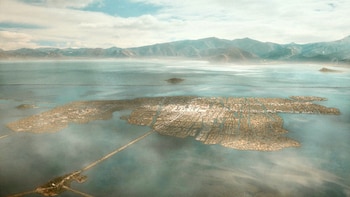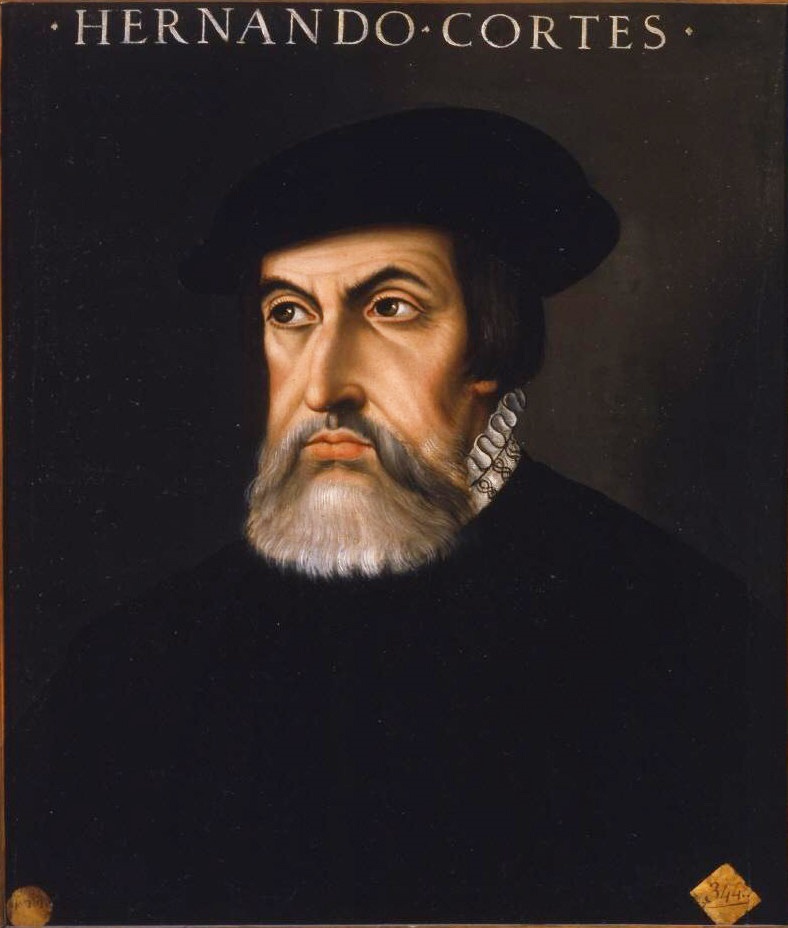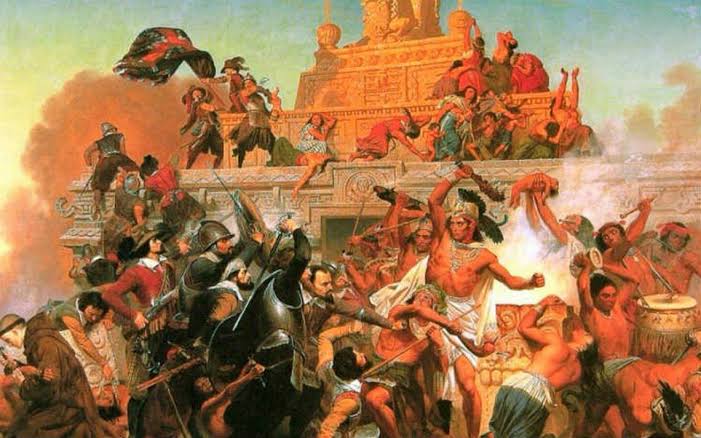
Before Hernán Cortes' arrival in Tenochtitlan, the city was the capital of the Mexica empire, which was ruled by the tlatoani Moctezuma Xocoyotzin, or Moctezuma II.
The city was splendid and had a unique organization, as each of the members of society played a role. In addition, cleanliness, education and knowledge were an essential part of the citizens of Tenochtitlan.
The city was located on an islet, which was in the middle of Lake Texcoco, located in the Valley of Mexico. Over time, this island was artificially expanded by the Mexicas until it became a floating city, which was achieved through hydraulic engineering works consisting of infill, piles, internal channels, dikes, bridges and aqueducts.
As to how many people were in the city, it is difficult to know for sure a figure, because when the Spaniards burned the codices, all those records vanished. However, among historians, the estimated figures range from 80,000 to 230,000 inhabitants. In this way, it is believed that Tenochtitlan could have outnumbered some of the most important cities of that time, such as Constantinople, which is estimated to have had 200,000 inhabitants; Paris, which at that time had 185,000 inhabitants and Venice, which had 130,000 inhabitants.

The author Eduardo Noguera estimates that the city consisted of 50,000 houses and inhabited by 300,000 people. This, based on some maps of the time. On the other hand, Jacques Soustelle includes within Tenochtitlan the population of Tlatelolco, which was originally an independent city, but which with the growth of the Mexican capital's power was absorbed and turned into a suburb. Thus, it calculates 700,000 inhabitants, including the riparian populations and the surrounding islands.
The main buildings of Tenochtitlan were Huey Teocalli, known as Templo Mayor; the Cuauhcalli, or house of the eagles; and the Temple of Tezcatlipoca; the Temple of Quetzalcoatl; the ball game and the Temple of the Sun.
The outline of the city was in a grid shape, and despite not having transport on wheels, Mexican engineers managed to make the capital of their empire passable on foot and also through canoes, allowing greater mobility and speed in the distribution of products or services.
In terms of hygiene, the city of Tenochtitlan was far superior to European cities, and this was accepted and reported by Hernán Cortés himself through his Relationship Letters, since in those accounts he showed his impressions due to the degree of hygiene he saw in the Mexican capital.

This is why in many respects, the city of Tenochtitlan was much higher than European cities. Seville, Spain, for example, where about 45,000 people lived, had a round outline, without symmetry and roads with little planning, so it lacked urban planning. Their hygiene was quite bad, because people used to throw their waste out the windows, leave the remains of building materials, spilling dirty water, which over time had to be regulated legally, since it was precisely the lack of hygiene that led to the emergence of some epidemics that arose in the past. throughout European history.
On the other hand, another of the conquistadors, Bernal Díaz del Castillo, said that Tenochtitlan offered its citizens other things, much better: “... and since we saw so many cities and valleys populated in the water and on the mainland and other large towns and that road so right and by level how Mexico was going, we were amazed and we said it looked like the enchantment things that tell in the book Amadís.
Because of the large towers and buildings that they had inside the water and all of them made of lime and song and even some of our soldiers said that if what they saw was between dreams and it is not wonderful that I write here in this way, because there is a lot to ponder about it. I don't know how I tell it, to see things never heard or even dreamed as we saw...”
KEEP READING:
Últimas Noticias
Debanhi Escobar: they secured the motel where she was found lifeless in a cistern

The oldest person in the world died at the age of 119

Macabre find in CDMX: they left a body bagged and tied in a taxi
The eagles of America will face Manchester City in a duel of legends. Here are the details

Why is it good to bring dogs out to know the world when they are puppies




